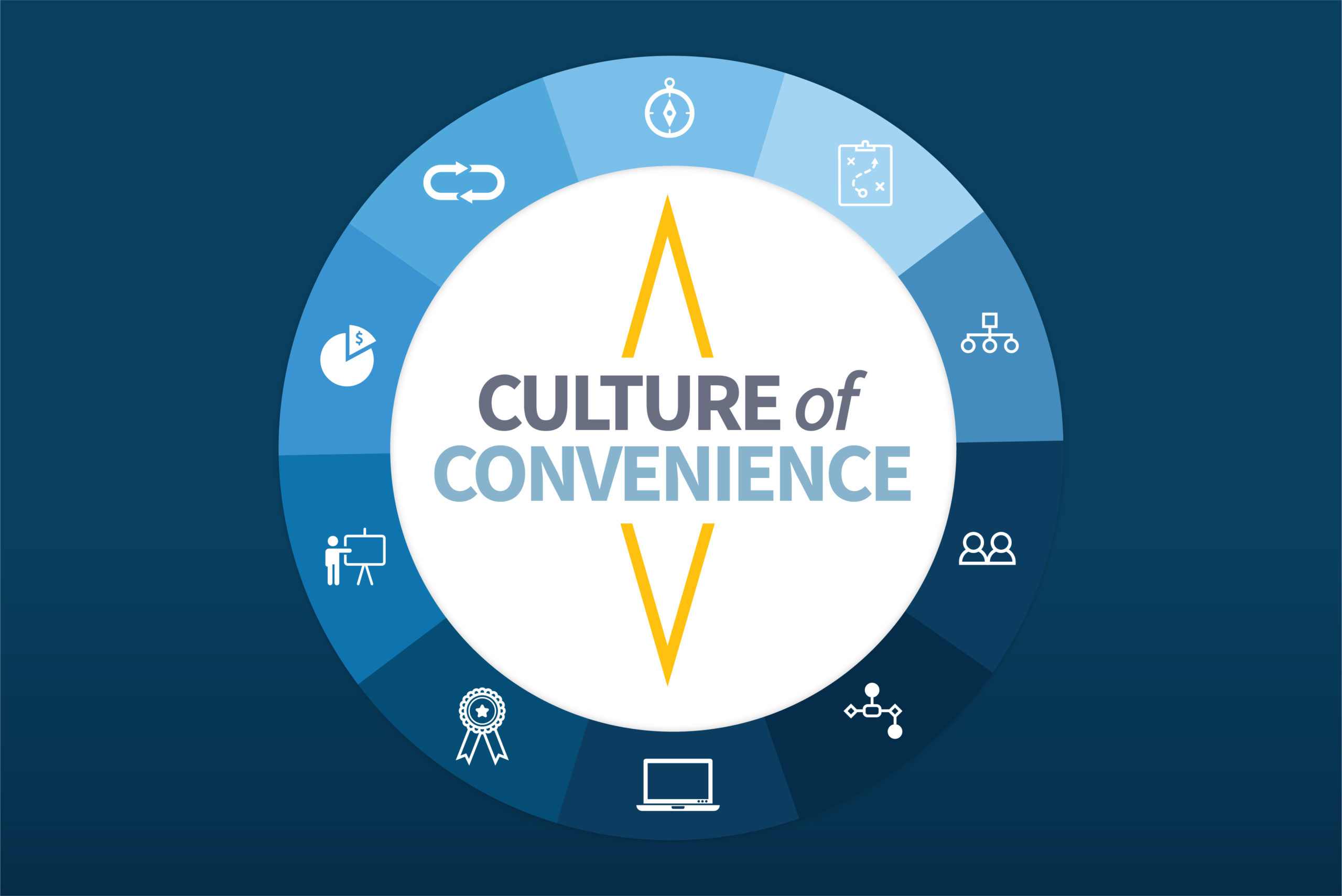Ask anyone and they’ll tell you; life is easier when everything is simple and convenient. The same is true for your business – when you can streamline tasks and establish processes that keep everything running like a well-oiled machine, your job becomes a lot easier. The good news is, building a culture of convenience within your business isn’t as hard as it may seem.
10 Strategic Elements for a Culture of Convenience
There are certain aspects of a business that can be adapted and applied as part of an overall strategy to build a culture of convenience within an organization. These 10 Strategic Elements can help you improve your business and build your own culture of convenience:
- Leadership: Your leadership determines the direction, strategic focus, and the core values of your organization. How are you leading and inspiring your employees?
- Business Model Strategy: This is where your products and services and the value proposition you have to offer comes into play, as well as your distribution channels. What are your target markets and are you reaching them effectively?
- Organizational Structure: Your organizational structure is the definition of the roles and reporting relationships within your organization. Do you have a clear delineation of power and authority as well as open communication within the hierarchy?
- HR/Staffing: Human resources, staffing selection, and performance management are an important element of any business. Have you established a career development plan to encourage staff retention and loyalty?
- Workflow Process: The coordination and integration of multiple departments within your workflow is essential to a business running smoothly, as is cooperation among those departments and your employees. However, establishing the process is just the first step; are you also leaving room for constant evaluation and continuous process improvement?
- Technology/IT: This includes not only your actual IT systems, networks, and equipment, but also the strategy and business requirements behind all those systems, as well as any API and website integrations you work with. Additionally, you need to consider: how are you managing security and risk?
- Compensation & Rewards: An important key to maintaining loyal employees is through compensation and rewards. This can include recognition and rewards, incentivizing employees, variable pay, bonuses, and commissions. How are you rewarding your employees when they help meet the goals and metrics you have set?
- Training & Development: When designing a training program you should consider various training methodologies, what competencies you expect from employees, and how you’ll develop their skills. What are your learning objectives and how will you measure performance metrics and track user feedback?
- Reporting & Financials: This is all the numbers – your financial statements, performance and analytics reports, as well as how you understand and analyze your financials. What are your Key Performance Indicators (KPIs)?
- R&D and Feedback Loop: Research and Development is key to gaining information about how you can improve your business. This includes instituting a feedback loop to gain information from your customers, and really listening to them. Consider, what types of interviews, surveys and tools could you be using to capture the voice of the customer?
More Insight Into Creating a Culture of Convenience
For more information on these strategic elements, and how you can create a culture of convenience in your business, check out the Culture of Convenience podcast.





